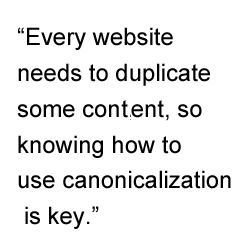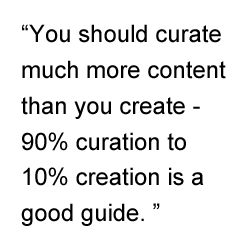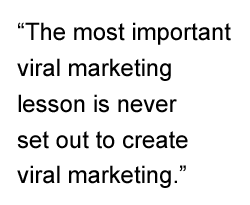Powerful SEO For Content Marketers: 5 Quick Tips
Content Creation and Curation
This post helps content marketers avoid falling into sometimes well hidden SEO bear traps.
5 Quick SEO Tips For Content Marketers
- Duplicate Content The Right Way.
- Create SAFE Content Curation.
- Little Things Matter.
- Keywords Are Friends.
- It’s A SoLoMo World

Duplicate Content The Right Way
Every website needs to duplicate some content. Knowing how to use canonicalization is key. As an Ecommerce Director one product contributed half our profits. We HAD to duplicate or go broke.
I learned about canonicals the hard way, but you don’t have too. One of the best posts I’ve read about how to use canonicals is A Guide To Canonicalization For Word Press by Tom Ewer.
Canonicalization tells search engine spiders what content to index and what “copied” content should be ignored. Canonicals are the right way to use the same content multiple times INSIDE your website or blog.
When you curate large blocks of content from OUTSIDE your site or blog use the “<BLOCKQUOTE>” tag with a linked reference at the end to avoid Google’s wrath. Google’s penalties take many forms, none good, so wear “belts and suspenders” where your web content is concerned.
When in doubt error on the side of safety and original content. Google does provide a way to use canonicalization across domains, but its involved and “involved” usually means hard and so easy to mess up.
so easy to mess up.
Categorization creates another content marketing challenge.
WordPress makes it so EASY to create and assign categories many may not realize the full measure of category assignments. When you assign a parent – child category in WordPress you create a “virtual content folder”.
“Parent” is the folder and posts inside the folder are “children”. WordPress URLs look like this: url.com/parent/child1, url.com/sameparent/child2. If I categorize SEO For Content Marketers: 5 Quick Tips in Curatti.com’s Content Marketing AND Branding categories I’ve committed a “dupe content” error.
I need to tell Google to index SEO For Content Marketers: 5 Quick Tips page in the Content Marketing “folder” and NOT the Branding copy. Read Tom Ewer’s post about how to safely put content into two WordPress categories without being and accidental “content duper”.
Learning to think in “keywords” creates categorization challenge too.
A friend created a parent category called “category” that he “put” all of his content into. His WP blog URL’s looked like this: url.com/category/parent/child1,2,3 etc. and url.com/category/parent2/child4,5,6. Google’s spider assigns importance from left to right. It seemed like my friend wanted to rank for the keyword “category” to Google.
My friend had two bad choices to fix his categorization problem. Option one was to correct the category assignment. Remove “category” and generate 404 page not founds until 301 redirecting every changed page to its new home. His blog had a lot of pages so painful to change everything.
Option 2 was use the WordPress “URL rewrite” function and create the URL he wanted and meant to create in the first place. I suggested he rewrite his URLs. That rewrite can’t help with existing links, but will sure help his blog/website’s SEO moving forward. Existing links should continue to work since “masking backwards” requires jumping through some hoops.
Be careful when you create and assign categories. Use canonicalization to duplicate content the “right way” and avoid Google’s dupe content penalties. Don’t be a content duper accidental or otherwise.
Safe Content Curation
 You should curate much more than you create – 90% curation to 10% creation. Curation has more reach faster. Curation lowers content creation costs and protects your modeled content because curating helps you know what “winners” deserve web and blog posts.
You should curate much more than you create – 90% curation to 10% creation. Curation has more reach faster. Curation lowers content creation costs and protects your modeled content because curating helps you know what “winners” deserve web and blog posts.
Scoop.it is my favorite curation tool. Scoop.it makes it easy to move content into WordPress blogs. BEWARE the dupe content police when using such a tool.
I rarely publish to one of my blogs from Scoopit because their tool moves the content block straight into my blogs dupping the content. When I use Scoop.it’s copy to WordPress tool I’m careful to:
- Use BLOCKQUOTE tags to “quote out” the copied content (add blockquotes in HTML if you don’t have the ” button).
- Write several hundred words of new content above and below the copied block.
- Only move copied content into a folder I’ve “robots.txted” out (tells search engine spiders to ignore content in that folder).
- Put the quote into an image (if small enough).
- Include a reference link back to where the curated content was found.
![]()
Using any two of those should create “belts” and “suspenders” protection curated content needs to assure search engines you aren’t stealing, spamming or duplicating someone’s content. Don’t be a duper!
Titles, Tags & Little Things That Matter
Does every page on your website have a unique title? Are you careful about including keywords in your image alt text? Do you consistently tag your posts? Great web marketing requires getting BIG STUFF right such as developing content people love, share and interact with, and knowing a thousand little things so your content plays well with search engines.
SEO alone can’t win your content great search listings anymore, but “technical SEO” can knock a great post down to good or a good post down to “no one will ever see it”. Getting those “thousand little SEO things” right means your content can fly. My favorite “technical SEO” tool to learn and stay current on those thousand little things is SEOmoz (now Moz.com).
Keywords Are Your Friends
 Any word or phrase can be a “keyword”, but not all keywords are created equal. 90% of the time we want Internet marketing to align with existing keywords. Use Google Adwords’ free Keyword Tool to discover monthly search demand. A simple search with Google’s Keyword Tool showed me “writes” has 3x as many searches as “contributors”, so I changed Curatti.com’s category name from “contributors” to writers.
Any word or phrase can be a “keyword”, but not all keywords are created equal. 90% of the time we want Internet marketing to align with existing keywords. Use Google Adwords’ free Keyword Tool to discover monthly search demand. A simple search with Google’s Keyword Tool showed me “writes” has 3x as many searches as “contributors”, so I changed Curatti.com’s category name from “contributors” to writers.
That change helps FUTURE posts, but the category change doesn’t work backwards. Existing content tagged with “contributors” can be changed but such a change resets social shares and generally mucks with inbound links, so using the URL rewrite option is a better solution to “recast” previously published “contributor” content (if you think the cost / benefit is there to do it and, since Curatti.com is so new it probably doesn’t make sense to recast those first posts).
Know the top 100 keywords your content needs to align with. Remember to test singular and plural keywords. If monthly searches is the same for singular and plural keys feel free to use either, if search count is different then note the one that gets more searches and make sure you use that keyword more. Explaining “stop words” is beyond this post’s mission, but feel free to read my ScentTrail Marketing Post on the subject.
10% of the time we hunt for “blue ocean” keywords – concepts not turned red with competition yet. We create “blue ocean” content to become the first one up a new route on Everest. We know we’ve reached the summit when new terms, keyword ideas we created, become competitive. Hell will freeze over before another website can own our “blue ocean” creations.
Its A SoLoMo World
Social, Local and Mobile (SoLoMo) all create important content marketing hooks. Optimizing for local search could be a full post by itself as this excellent HubSpot.com post proves. Know that you need to take specific content and meta-data actions to show up in local search.
Achieving social shares is less formulaic, at least until you get to know your audience and traffic. When I wrote 5 Secret and Disruptive Content Curation Tools for my former employer Raleigh, North Carolina web and software designers Atlantic BT there was a high probability the post would “go viral” becasue:
- Similar post, 5 Magical Do More With Less Curation Tools, posted the previous year went “mega-viral”.
- The post includes friends with mega-subscription lists like Paper.li and Scoop.it.
- The post is positive and laudatory (hard to get negative to go viral unless it is an attack and then it goes UP and right back DOWN).
- My following has reached a point where key pieces should get solid support.
- “My following” is not huge, but I have followers with HUGE followings and if they miss a key post I’m not above asking for help (ever lol).
- Tools “reviews” and Internet marketing “secrets” perform well as they play to our “constant learning” and tribe impulses.

The last bullet may be the hardest thing to learn about creating “social” content. Knowing your tribe, the people who follow, advocate and “buy” your ideas, content and “products”, is a CSF (Critical Success Factor) to creating great content marketing. My tribe expects me to discuss Internet marketing, but I learned a great lesson from the uber-blogger Maria Popova recently.
Popova curates broadly looking for synergistic threads. Multi-directional curation is a winning idea. Popova’s BrainPickings.org is beautifully multi-directional. Shared more thoughts about Popova’s brilliant content curation in Building On Combinatorial Creativity on ScentTrail Marketing. Curating in many directions strengthens your content “net”, Google authority and pagespread (# pages in Google).
Perhaps the most important “viral marketing” lesson is never set out to create viral marketing. Many have tried and few succeed because “viral marketing” is serendipitous enough attempting to create on demand viral marketing is a fool’s errand.
YES, you should learn what content plays well with your tribe and the first rule of content marketing is do more of what works, less of what doesn’t. Focus on the job at hand and be smart and quick enough to realize when something is trending so you can surf and amplify the wave before it hits the beach.
Latest posts by Martin (Marty) Smith (see all)
- The New Ecommerce: Current Best Practices - August 18, 2014
- Can Subscriptions Smite The SEO Giant? - August 11, 2014
- Invisible Giant: Why Its Hard To See the New SEO - August 4, 2014


